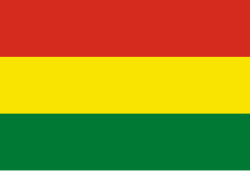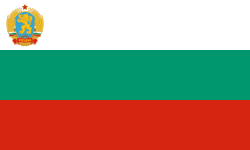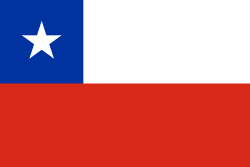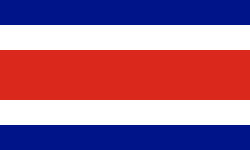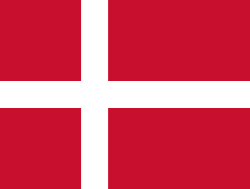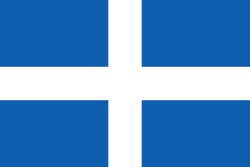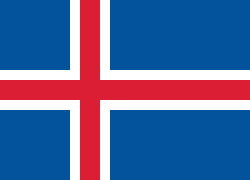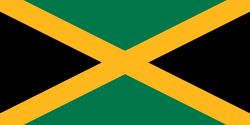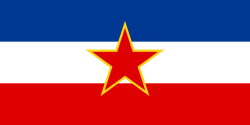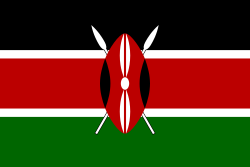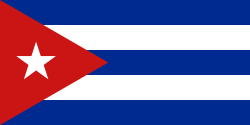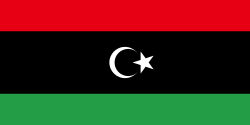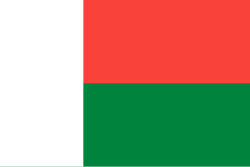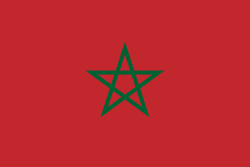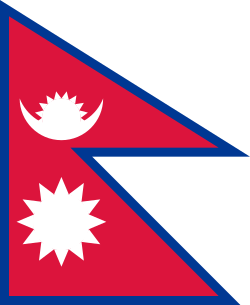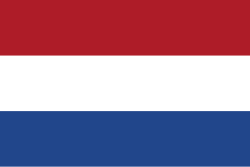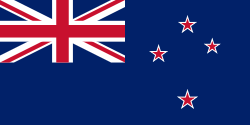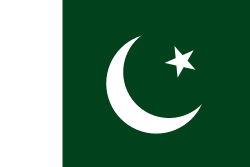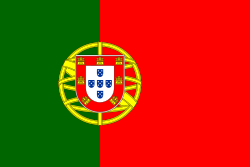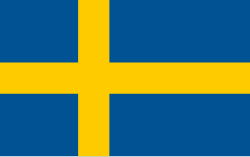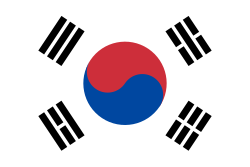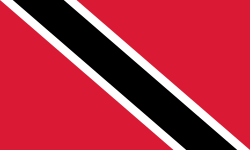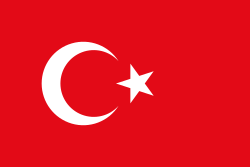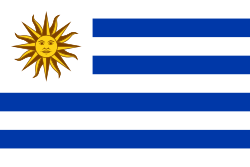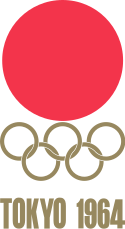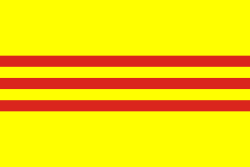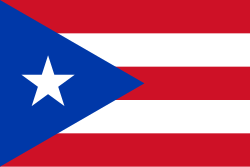Olympiska sommarspelen 1964
| Olympiska sommarspelen 1964 | |
 | |
| Grenar | 163 grenar i 19 sporter |
|---|---|
| Deltagare | |
| Nationer | 93 |
| Aktiva | 5 151 |
| Män | 4 473 |
| Kvinnor | 678 |
| Värdskap | |
| Land | |
| Ort | Tokyo |
| Arena | Tokyos Olympiastadion (1958) |
| Invigning | 10 oktober 1964 |
| Spelen öppnades av | Kejsar Hirohito av Japan |
| Läste deltagarnas ed | Takashi Ono |
| Läste funktionärernas ed | Ej förrän 1972 |
| Elden tändes av | Yoshinori Sakai |
| Avslutning | 24 oktober 1964 |
← Rom 1960 | |
Olympiska sommarspelen 1964 var de artonde moderna olympiska spelen och hölls i Tokyo i Japan mellan den 10 oktober och den 24 oktober 1964.[1] De var de första spelen som genomfördes i ett asiatiskt land,[2] och värdnationen Japan fick goda vitsord för ett utomordentligt organiserande.[1]
Arrangemang
Inbjudningar, bojkotter
Sydafrika blev ej inbjudet på grund av apartheidsystemet. Landet var uteslutet från OS-deltagande fram till återkomsten 1992.
Indonesien och Nordkorea bojkottade spelen. Detta skedde eftersom IOK ej ville förbjuda Israel och Taiwan att delta i tävlingarna.

Arenor och invigning
Huvudarena för tävlingarna var Olympiastadion i Tokyo. Anläggningen hade dock redan varit i bruk i sju års tid, eftersom den byggts inför Asiatiska spelen 1958. Totalt arrangerades tävlingar vid 30 olika arenor och tävlingsanläggningar i fem olika prefekturer – Tokyo, Saitama, Kanagawa, Nagano och Chiba.[1]
Detta var sista gången man sprang på kolstybbsbanor under löpgrenarna;[2] vid 1968 års sommar-OS användes tartanbeläggning på banorna. Det var också sista gången de officiella målgångarna klockades med manuell tidtagning. Däremot var det första gången vid ett OS som stavhopparna nyttjade stavar av glasfiber.[2]
Den olympiska elden tändes av Yoshinori Sakaï. Han föddes 6 augusti 1945, det vill säga den dag då atombomben fälldes över Hiroshima.[2]
Under OS arrangerades tävlingar i 163 grenar.[2]
Bedrifter och överraskningar
Den ryska gymnasten Larisa Latynina fyllde på sitt lager av olympiska medaljer med ytterligare sex. Efter spelen i Tokyo var den sammanlagda skörden nio guld-, fem silver- och fyra bronsmedaljer, alltså totalt 18[2]. Detta var det mesta för någon OS-idrottare fram till Michael Phelps i London 2012.
Věra Čáslavská, Tjeckoslovakien samlade på sig fyra guldmedaljer i gymnastik.
Den främste manlige deltagaren resultatmässigt var den amerikanske simmaren Don Schollander, som erövrade fyra guld.
Abebe Bikila, Etiopien, var den förste maratonlöparen att ta guld för andra gången.[2] Han upprepade här sin bedrift från OS i Rom 1960.
Peter Snell, Nya Zeeland, vann både 800 m och 1500 m i friidrott.
I Tokyotävlingarna fanns också ett antal tävlande, som erövrade medalj för minst tredje gången i rad. Dessa var:
- Vjatjeslav Ivanov, rysk roddare, tredje raka segern i single-sculler.
- Dawn Fraser, australisk simmare, tredje raka segern på 100 m fritt.
- Al Oerter, amerikansk diskuskastare, tredje raka segern.
- Dezső Gyarmati, ungersk vattenpolospelare, femte gången i rad.
- Imre Polyák, ungersk brottare, äntligen guld efter tre raka silver.[2]
Ungern, vinnare av sabelfäktningens lagtävling sju gånger i rad 1928–1960, förlorade semifinalen mot Italien, 7–9, och tog inte ens medalj. Italienarna förlorade sedan finalen mot Sovjet, 6–9.
Den första Fair Play-trofén i olympiska sammanhang utdelades till de båda svenska seglarna Lars Gunnar och Stig Lennart Käll. De avbröt sin segling för att undsätta två andra tävlande, vars båt sjunkit.[2]
Arrangörslandets deltagande
Arrangörslandet Japans OS-trupp bestod av 437 personer, av vilka 294 var manliga idrottare, 61 kvinnliga idrottare och 82 var funktionärer. OS-truppen var dubbelt så stor som den man skickat till OS i Rom fyra år tidigare. Japan vann totalt 16 guld, 5 silver och 8 brons och placerade sig trea i medaljtabellen, efter USA och Sovjetunionen.[1]
Nya grenar
Judo och volleyboll gjorde olympisk premiär,[1] och båda sporterna var arrangörslandet Japan framgångsrikt. Damvolleybollfinalen mellan Japan och Sovjetunionen (där Japan segrade med setsiffrorna 3–0) besågs av 85 procent av Japans TV-tittare.[1]
Helena "Lana" Dupont blev första kvinna att delta i ridsportens fälttävlan.
Sporter
Deltagande nationer
Totalt deltog 94 länder i spelen 1964. Algeriet, Dominikanska republiken, Elfenbenskusten, Kamerun, Kongo, Madagaskar, Malaysia, Mali, Mongoliet, Nepal, Niger, Nordrhodesia (som blev självständigt som Zambia samma dag som avslutningsceremonin), Senegal, Tanzania (som Tanganyika) och Tchad debuterade vid dessa spel.
Även Libyen ställde upp för första gången. Landet drog sig dock ur under spelen före tävlingsstart, och därmed var det endast 93[2] länder som faktiskt tävlade. Västtyskland och Östtyskland deltog i ett gemensamt lag kallat Tysklands förenade lag mellan 1956 och 1964.
Totalt deltog 5151 idrottare under tävlingarna. Dessa fördelades mellan 678 kvinnor och 4473 män.[2]
|
Medaljfördelning
| Plac. | Land | Guld | Silver | Brons | Totalt antal medaljer |
|---|---|---|---|---|---|
| 1 | 36 | 26 | 28 | 90 | |
| 2 | 30 | 31 | 35 | 96 | |
| 3 | 16 | 5 | 8 | 29 | |
| 4 | 10 | 22 | 18 | 50 | |
| 5 | 10 | 10 | 7 | 27 | |
| 6 | 10 | 7 | 5 | 22 | |
| 7 | 7 | 6 | 10 | 23 | |
| 8 | 6 | 2 | 10 | 18 | |
| 9 | 5 | 6 | 3 | 14 | |
| 10 | 4 | 12 | 2 | 18 |
Referenser
- ^ [a b c d e f] ”TOKYO 1964 Olympic Games | JOC - Japanese Olympic Committee” (på engelska). Japanese Olympic Committee (JOC). https://www.joc.or.jp/english/historyjapan/tokyo1964.html. Läst 1 november 2019.
- ^ [a b c d e f g h i j k] ”Tokyo 1964 Summer Olympics - results & video highlights” (på engelska). International Olympic Committee. 24 oktober 2019. https://www.olympic.org/tokyo-1964. Läst 1 november 2019.
Externa länkar
- Olympiska rörelsen
- Officiell rapport
- Japans olympiska kommittés officiella webbplats (japanska)
 Wikimedia Commons har media som rör Olympiska sommarspelen 1964.
Wikimedia Commons har media som rör Olympiska sommarspelen 1964.
Media som används på denna webbplats
Pictograms of Olympic sports - Basketball. This is unofficial sample picture. Images of official Olympic pictograms for 1948 Summer Olympics and all Summer Olympics since 1964 can be found in corresponding Official Reports.
Pictograms of Olympic sports - Boxing. This is unofficial sample picture. Images of official Olympic pictograms for 1948 Summer Olympics and all Summer Olympics since 1964 can be found in corresponding Official Reports.
Pictograms of Olympic sports - Wrestling. This is unofficial sample picture. Images of official Olympic pictograms for 1948 Summer Olympics and all Summer Olympics since 1964 can be found in corresponding Official Reports.
Pictograms of Olympic sports - Cycling (road). This is unofficial sample picture. Images of official Olympic pictograms for 1948 Summer Olympics and all Summer Olympics since 1964 can be found in corresponding Official Reports.
Pictograms of Olympic sports - Football. This is unofficial sample picture. Images of official Olympic pictograms for 1948 Summer Olympics and all Summer Olympics since 1964 can be found in corresponding Official Reports.
Pictograms of Olympic sports – . This is an unofficial sample picture. Images of official Olympic pictograms for 1948 Summer Olympics and all Summer Olympics since 1964 can be found in corresponding Official Reports.
Pictograms of Olympic sports - Fencing. This is unofficial sample picture. Images of official Olympic pictograms for 1948 Summer Olympics and all Summer Olympics since 1964 can be found in corresponding Official Reports.
Pictograms of Olympic sports - Gymnastics (artistic). This is unofficial sample picture. Images of official Olympic pictograms for 1948 Summer Olympics and all Summer Olympics since 1964 can be found in corresponding Official Reports.
Pictograms of Olympic sports - Judo. This is unofficial sample picture. Images of official Olympic pictograms for the 1948 Summer Olympics and all Summer Olympics since 1964 can be found in corresponding Official Reports.
Pictograms of Olympic sports - Canoeing (flatwater). This is unofficial sample picture. Images of official Olympic pictograms for 1948 Summer Olympics and all Summer Olympics since 1964 can be found in corresponding Official Reports.
Pictograms of Olympic sports - Canoeing (flatwater). This is unofficial sample picture. Images of official Olympic pictograms for 1948 Summer Olympics and all Summer Olympics since 1964 can be found in corresponding Official Reports.
Pictograms of Olympic sports - Field hockey. This is unofficial sample picture. Images of official Olympic pictograms for 1948 Summer Olympics and all Summer Olympics since 1964 can be found in corresponding Official Reports.
Pictograms of Olympic sports - Modern pentathlon. This is unofficial sample picture. Images of official Olympic pictograms for 1948 Summer Olympics and all Summer Olympics since 1964 can be found in corresponding Official Reports.
Pictograma de los juegos ecuestres.
Pictograms of Olympic sports - Rowing. This is unofficial sample picture. Images of official Olympic pictograms for 1948 Summer Olympics and all Summer Olympics since 1964 can be found in corresponding Official Reports.
Pictograms of Olympic sports - Sailing. This is unofficial sample picture. Images of official Olympic pictograms for 1948 Summer Olympics and all Summer Olympics since 1964 can be found in corresponding Official Reports.
Pictograms of Olympic sports - Diving. This is unofficial sample picture. Images of official Olympic pictograms for 1948 Summer Olympics and all Summer Olympics since 1964 can be found in corresponding Official Reports.
Pictograms of Olympic sports - Swimming. This is unofficial sample picture. Images of official Olympic pictograms for 1948 Summer Olympics and all Summer Olympics since 1964 can be found in corresponding Official Reports.
Pictograms of Olympic sports - Shooting. This is unofficial sample picture. Images of official Olympic pictograms for 1948 Summer Olympics and all Summer Olympics since 1964 can be found in corresponding Official Reports.
Pictograms of Olympic sports - Weightlifting. This is unofficial sample picture. Images of official Olympic pictograms for 1948 Summer Olympics and all Summer Olympics since 1964 can be found in corresponding Official Reports.
Pictograms of Olympic sports - Water polo. This is unofficial sample picture. Images of official Olympic pictograms for 1948 Summer Olympics and all Summer Olympics since 1964 can be found in corresponding Official Reports.
Pictograms of Olympic sports - Volleyball (indoor). This is unofficial sample picture. Images of official Olympic pictograms for 1948 Summer Olympics and all Summer Olympics since 1964 can be found in corresponding Official Reports.
The civil ensign and flag of Belgium. It is identical to Image:Flag of Belgium.svg except that it has a 2:3 ratio, instead of 13:15.
1910 Flag of Bermuda (with smaller coat of arms)
| Bolivias flagga* | |
|---|---|
| country | Template:I18n/Republic of Bolivia |
| används av | Bolivia |
| från | 1851 |
| till | Present |
| skapad av | Government of Bolivia |
| format | 15:22 |
| form | rektangulär |
| färger | röd, gul, grön
flag has 3 horizontal stripes |
| andra egenskaper | A horizontal tricolor of red, yellow and green. |
Författare/Upphovsman: Scroch, Licens: CC BY-SA 4.0
National Flag of the People's Republic of Bulgaria (1948-1968). Tha flag has got the coat-of-arms from 1948
Författare/Upphovsman: Scroch, Licens: CC BY-SA 4.0
National Flag of the People's Republic of Bulgaria (1948-1968). Tha flag has got the coat-of-arms from 1948
Det är enkelt att lägga till en ram runt den här bilden
Den Dominikanska republikens flagga består av ett vitt centrerat kors som sträcker sig hela vägen ut till flaggans kant. I mitten på korset sitter ett emblem med en bibel, ett gyllene kors och sex dominikanska flaggor. Emblemet är omgivet av olivkvistar och palmblad. Under emblemet står ”Republica Dominicana” och ovanför ett band med landets mottot ”Dios, Patria, Libertad” (”Gud, Landet, Frihet”).
Flag of the Ivory Coast, written by Jon Harald Søby, modified by Zscout370. The colors match to what is reported at http://fotw.vexillum.com/flags/ci.html.
The flag of the Ethiopian Empire with the Lion of Judah in the center
The flag of the Ethiopian Empire with the Lion of Judah in the center
Flagga Grekland (1822-1969) och (1974-1978), Årsdag flagga Grekland (1978 - )
Flag of Israel. Shows a Magen David (“Shield of David”) between two stripes. The Shield of David is a traditional Jewish symbol. The stripes symbolize a Jewish prayer shawl (tallit).
Flag of Jamaica. “The sunshine, the land is green, and the people are strong and bold” is the symbolism of the colours of the flag. GOLD represents the natural wealth and beauty of sunlight; GREEN represents hope and agricultural resources; BLACK represents the strength and creativity of the people. The original symbolism, however, was "Hardships there are, but the land is green, and the sun shineth", where BLACK represented the hardships being faced.
Flag of the Socialist Federal Republic of Yugoslavia (1946-1992).
The design (blazon) is defined in Article 4 of the Constitution for the Republic of Yugoslavia (1946). [1]
Flag of the Socialist Federal Republic of Yugoslavia (1946-1992).
The design (blazon) is defined in Article 4 of the Constitution for the Republic of Yugoslavia (1946). [1]
Flag of Liechtenstein
Flag of Mexico (1934-1968)
Författare/Upphovsman: unknown, Licens: CC BY-SA 2.5
Författare/Upphovsman: Gutten på Hemsen, Licens: CC0
Flag of Norway with colors from the previous version on Commons. This file is used to discuss the colors of the Norwegian flag.
State Flag of Peru.
Flag of Portugal, created by Columbano Bordalo Pinheiro (1857–1929), officially adopted by Portuguese government in June 30th 1911 (in use since about November 1910). Color shades matching the RGB values officially reccomended here. (PMS values should be used for direct ink or textile; CMYK for 4-color offset printing on paper; this is an image for screen display, RGB should be used.)
Flag of Romania (24 September 1952 - 21 August 1965)

Construction sheet of the Flag of Romania as depicted in Decree nr. 972 from 5 November 1968.
- l = 2/3 × L
- C = 1/3 × L
- S = 2/5 × l
Flag of Romania (24 September 1952 - 21 August 1965)

Construction sheet of the Flag of Romania as depicted in Decree nr. 972 from 5 November 1968.
- l = 2/3 × L
- C = 1/3 × L
- S = 2/5 × l
Flag of Senegal
(c) I, Cmapm, CC BY-SA 3.0
The flag of the Soviet Union (1955-1991) using a darker shade of red.
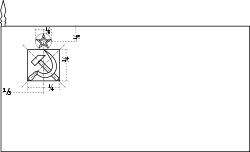
(c) I, Cmapm, CC BY-SA 3.0
The flag of the Soviet Union (1955-1991) using a darker shade of red.

Författare/Upphovsman: SanchoPanzaXXI, Licens: CC BY-SA 4.0
Flag of Spain during the Spanish State. It was adopted on 11 October 1945 with Reglamento de Banderas Insignias y Distintivos (Flags, Ensigns and Coats of Arms Bill)
The national flag of Kingdom of Thailand; there are total of 3 colours:
- Red represents the blood spilt to protect Thailand’s independence and often more simply described as representing the nation.
- White represents the religion of Buddhism, the predominant religion of the nation
- Blue represents the monarchy of the nation, which is recognised as the centre of Thai hearts.
Trinidad och Tobagos flagga
Flag of the unified Team of Germany for the Olympic Games, 1960–1968.
Government Ensign of Hungary, flown by state-owned, non-military vessels from 1957 to 1990.
Olympic Rings without "rims" (gaps between the rings), As used, eg. in the logos of the 2008 and 2016 Olympics. The colour scheme applied here was specified in 2023 guidelines.
Olympic Rings without "rims" (gaps between the rings), As used, eg. in the logos of the 2008 and 2016 Olympics. The colour scheme applied here was specified in 2023 guidelines.
Flag of Tunisia until 1999.
Yoshinori Sakai at the 1964 Olympics
The Canadian Red Ensign, the national flag of Canada from 1957 to 1965. (see: the Canadian Red Ensign on the Register of Arms, Flags and Badges)
Författare/Upphovsman: unknown, Licens: CC BY-SA 2.5
State Flag of Venezuela 1930-2006, New flag was introduced 9 March 2006.
Pictograms of Olympic sports - Cycling (road). This is unofficial sample picture. Images of official Olympic pictograms for 1948 Summer Olympics and all Summer Olympics since 1964 can be found in corresponding Official Reports.
Logo for the 1964 Summer Olympics in Tokyo
Det är enkelt att lägga till en ram runt den här bilden
Flag of Southern Rhodesia (1924–1964).
Flag of the Philippines (1919–1936)
Författare/Upphovsman: Sodacan, Licens: CC BY-SA 4.0
Flag of British Guiana (1919-1955)
Pictograms of Olympic sports - Volleyball (indoor). This is unofficial sample picture. Images of official Olympic pictograms for 1948 Summer Olympics and all Summer Olympics since 1964 can be found in corresponding Official Reports.
Författare/Upphovsman: Tcfc2349, Licens: CC BY-SA 4.0
Flag of the Bahamas (1964-1973)
Flag of Cameroon, 1961-75
Flag of the Iraqi Republic, used officially in different forms from 1963-2008.
Flag of Northern Rhodesia, 1939–1964
Sable six palets wavy Argent on a Chief Azure an eagle reguardant wings expanded Or holding in the talons a Fish of the second.
The flag of Brazil from 1960 to 1968 with 22 stars.




























